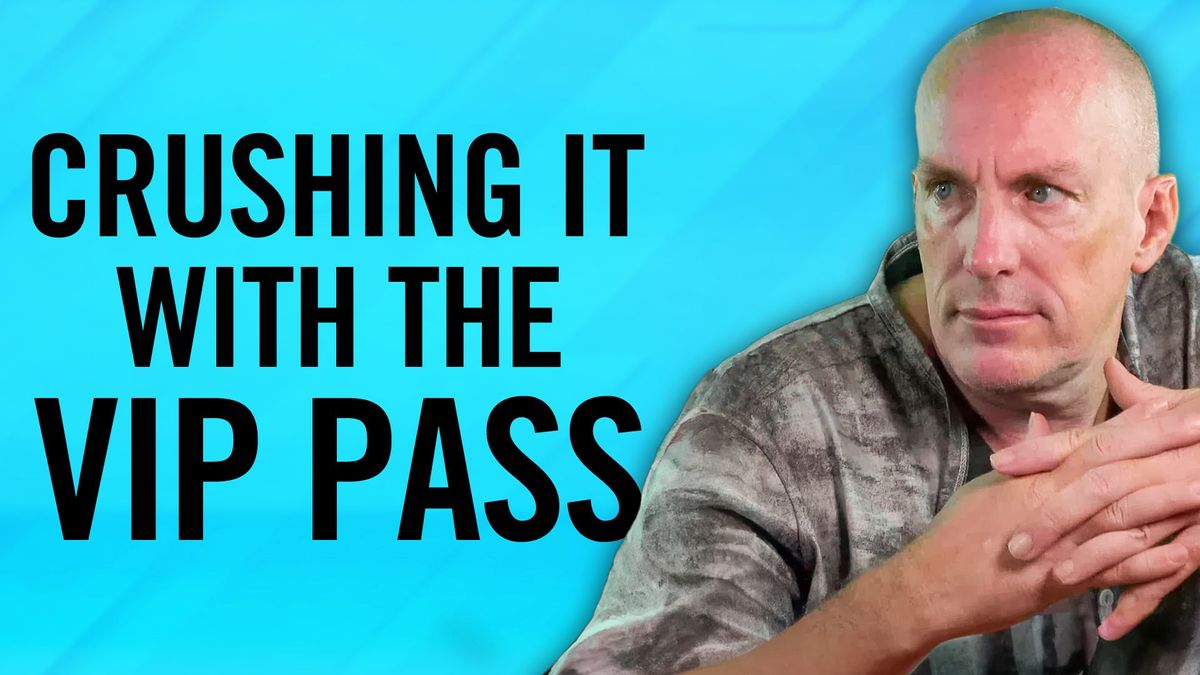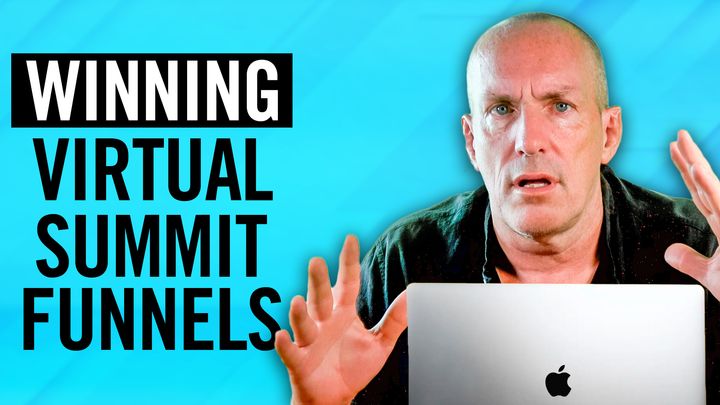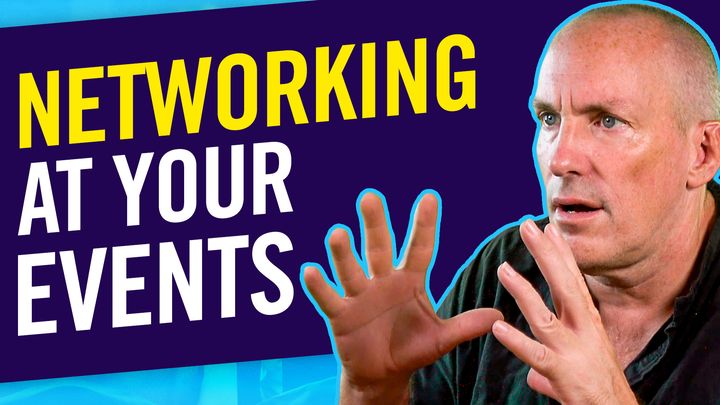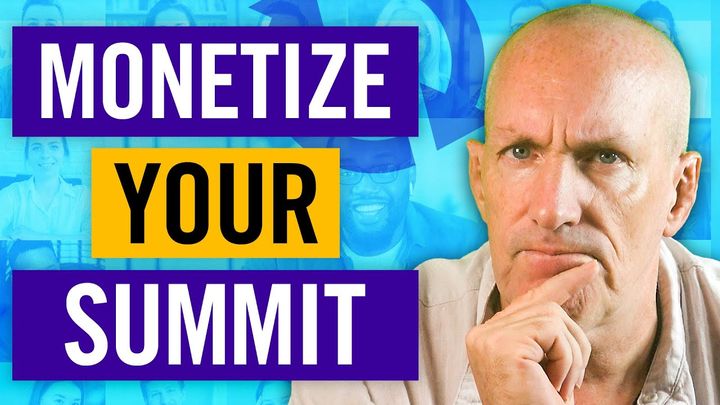Kick Some Virtual Summit Profit Ass With The All-Access Pass

The cost of the virtual event as a thing cannot exceed the amount of money it brings in. Learn why an All-Access Pass is the easiest way to ensure a positive return on that investment.
If you’ve ever attended a virtual summit before, you know they are generally free to attend.
But, as part of the summit promotions, an all-access pass is usually sold on the backend. Indeed, the All-Access Pass is usually the most significant revenue stream from a virtual summit.
Of course, there are other options like paid tickets, or you might see hosts pitching a practice, membership, or service rather than an all-access pass.
So, let’s stick with the traditional approach - WHAT is an all-access pass, how it works, and most importantly, why it works?
What is the All-Access Pass (AAP)?
With an all-access pass, attendees can purchase ongoing access to your summit presentations rather than only being able to watch live or for 24 hours after the event.
As a part of this offer, you can include bonuses, for example, reports contributed by speakers, transcripts, and interactive events like co-working and networking sessions.
In structuring your All-Access Pass, there’s ‘no right way’ to do this. There are four options for what this could look like:
1. Early Bird Tickets
- This price is available from the beginning of the promotion through the day before the summit start date, and it is the most popular ticket sold.
- You may also include an early bird special bonus for those who sign up early– maybe an additional, exclusive eBook for free.
- For this example, let’s price the Early Bird price at around $69.
2. At the Door Tickets
- This price is available only during the event.
- It’s around $20 to $30 more than the Early Bird ticket.
- A live chat at your summit and “did you miss yesterday’s presentations?” are great ways to encourage door ticket sales.
3. Evergreen Tickets
- Evergreen tickets will be an additional $20 to $40 more than the Early Bird ticket and are only available after the summit.
- You are having this as an evergreen product makes it a significant up or down-sale product for other sales and launches that you may have.
4. Mix and match
- Choose more than one option and deliver some content right as someone buys and some later.
- It’s up to you and your workflow to get the content you need.
- For example, if you’re not going to get presentations from your speakers until the week before the summit starts, you obviously can’t give early access to that.
Tiered access level
The first and most common way of making money with a virtual summit is to sell passes to the panel, making it only available to paid audience members or making certain summit features available only to those who pay for access.
You can:
- Offer an “all-access pass” that allows members access to all event activities, presentations, and post-event video content.
- Offer a “reduced-access pass” or “limited-access pass” for the event but omit access to the post-event video content and specific features.
- Offer a “VIP access pass” with specialty access to events and activities reserved for VIP guests.
By having a tiered access level, you provide a pass right for audiences of all demographics and with varied budgets and create a sense of urgency or desire to purchase specific tokens.
For instance, offering a “limited” number of VIP passes will create urgency for those already considering this option because they won’t want to miss out.
When selling passes to your virtual summit, it’s also a good idea to increase pricing for all pass levels as you near the event. Make it clear in your marketing that pass access prices are tiered and will increase as the event date nears.
Again, this creates urgency, so your audience will be more likely to purchase early.
Marketing the All-Access Pass
No one wants “ongoing access to presentations for $20”. So your offer needs to be more appealing than that if you want them to hit the “buy now” button!
Two of the most significant selling points of the AAP are:
- Time:
Few people have time to sit through 2 or 3 days’ worth of content from 9 am to 5 pm!
2. Value:
Because of the value provided, it’s a no-brainer to make the small investment to purchase the pass and be entered into this crazy giveaway.
Bonuses
One of the fun things about the AAP is that you can put whatever sort of bonus materials in it that you’d like, including:
- Courses
- Workshops
- Live sessions
- Co-working sessions
- Bonus interviews
- Physical products
- You can make bonuses work for you in two ways:
Ask your speakers if they would like to contribute anything to a big, multi-winner giveaway. For example, include the links to the speakers’ opt-ins, the video replays of all the presentations, or a massive, multi-winner giveaway.
Most speakers include a digital product like an eBook or access to a paid course, or a time commitment like a one-hour strategy session.
The catch is that the giveaway is only available to those who purchase the AAP. Yet, the likelihood of winning something is enormous, for example, if you have around 40 or so winners.
In turn, this is mutually beneficial to both the audience, of course, also to the speaker, since, while we’re talking about this awesome thing that they’re giving away, the audience is getting to know what kinds of services or products they could expect to not only win from the speaker but also to buy later.
OR make it a limited-time offer, which means those bonuses go away if they don’t sign up!
Pricing your all-access pass
So, we say the event is free, yet we also talk about the AAP, which is paid. So which is it? Is it paid or free?
The summit itself is a FREE event.
Anyone can come and watch it during the streaming timeframe, watch each video as many times as they would like to during the streaming timeframe, and come and go as they please.
The only investment required to see the videos is the attendee’s email address, which is the ONLY place where the links to your videos will be displayed.
If you don’t have the day’s email, you don’t have the speakers’ links.
The AAP comes in after the videos have been taken down (though the most popular time for it to be sold is before the event goes live).
For example, each day’s content is available for 24 to 48 hours.
After 24 hours, the videos are placed into the AAP vault, where only AAP members can access them.
All-access pass pricing mistakes
Pricing your all-access pass can feel tricky.
You don’t want to go so low that you devalue your speakers and their bonuses, but on the other hand, you don’t want to go so high that no one buys.
1. Pricing your all-access pass too low
A $19 all-access pass doesn’t look valuable to attendees. The price straight-up says that there's not a lot of value in the offer.
Also, if you have thousands of dollars in bonuses that your speakers contribute to the all-access pass, but sell it for $47, you downplay the value and don’t honor your speakers.
2. Pricing your all-access pass too high
On the flip side, you can also go too high with your all-access pass price.
Keep in mind that most of the people who see this offer are part of a cold audience and need an easy-yes offer to get started.
3. Assuming your audience can’t afford anything
People will pay for you to solve their problems.
They won’t blink at a $97 offer that truly gives them something that they need.
Don’t undervalue what you create or assume that your audience won't pay. Let them make that decision.
4. Skipping price increases
People need encouragement to buy, and a reason to decide one way or the other.
Having your all-access pass at the same price throughout the entire event will hurt your conversion rates, so be sure to include price increases.




